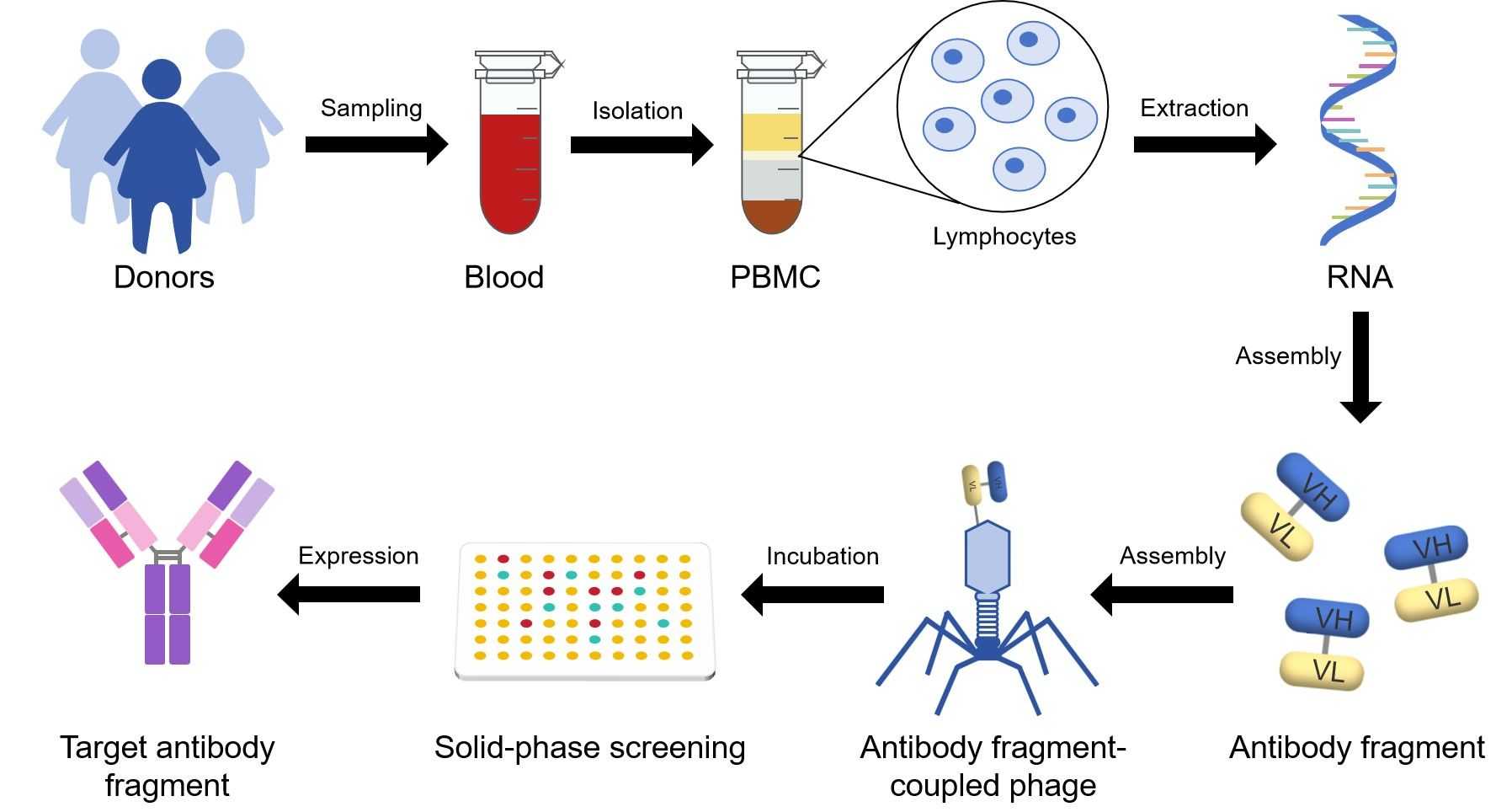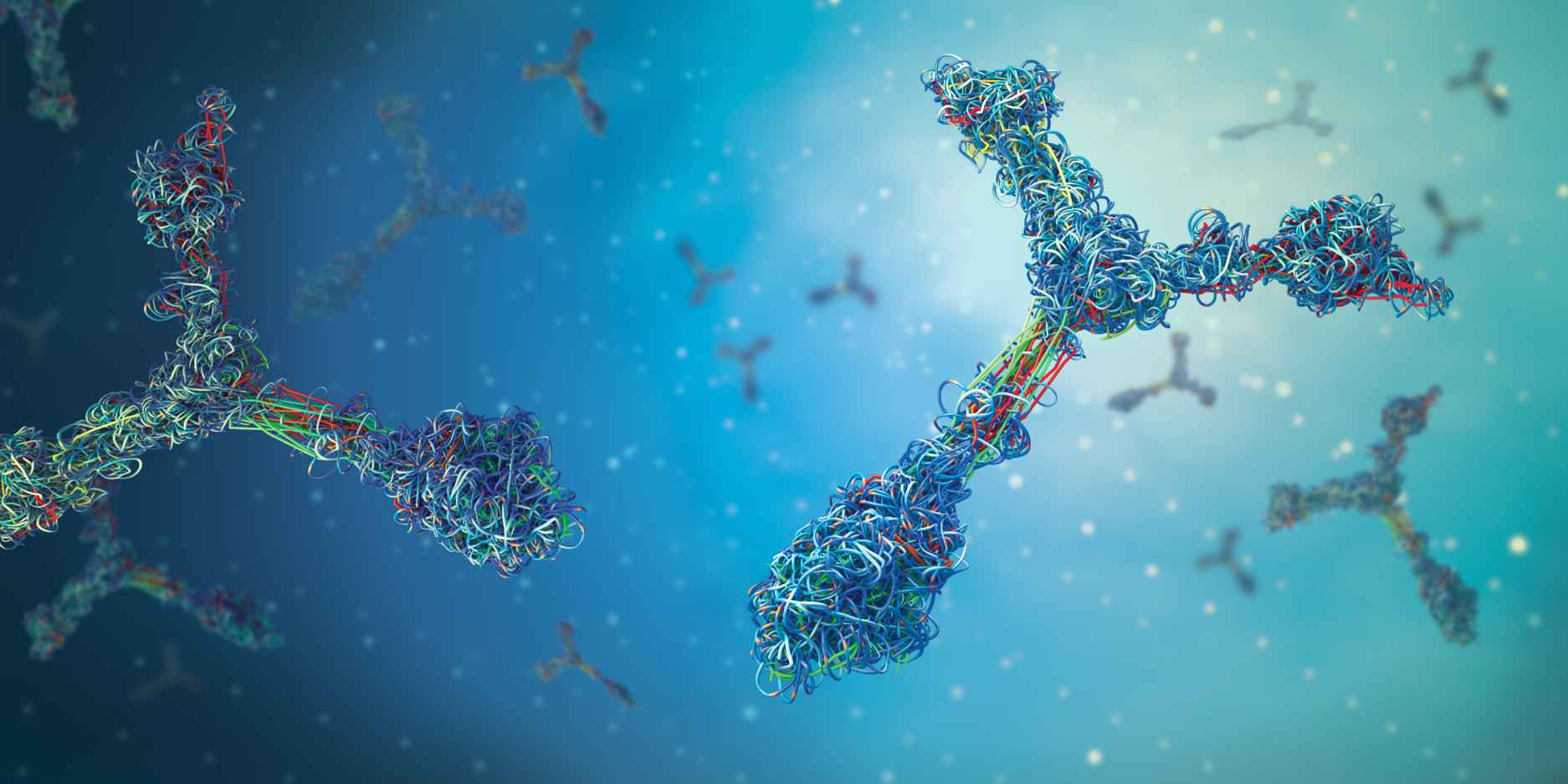Monoclonal antibodies (mAbs) are widely used in biomedical research and medicine to fight, diagnose and research diseases and to develop and test new drugs. However, the mouse ascites method of mAb production (such as Hybridoma) is significantly limited due to the substantial pain and distress involved, and raised serious animal welfare concerns. Fortunately, an alternative to animal-based mAbs appears, namely recombinant antibodies (rAb). rAb is produced using antibody genes (screening by phage display) in a laboratory or taken from human cells, with completely no need for animals. Currently, rAb can meet all applications in which traditional mAbs are used and present inherent advantages over their traditional animal-derived counterparts.
Creative Biolabs has a world-class technical team to provide the most comprehensive list of rAb products and customized rAb development services for clients. We believe our off-the-shelf products and high-quality services will support your needs.
Hybridoma was first developed in 1975 by George Köhler and César Milstein. This technology is widely used for the antibody production based on the fusion of mouse immunized B spleen cells with myeloma cells. Antibody of interest is produced by the immortal B cells, and then the best clones are screened to obtain monoclonal antibodies with the desired antigen affinity.
Hybridoma development represents one of the most traditional methods for the generation of monoclonal antibodies, which can produce highly sensitive binders and make them particularly adapted for assay development. Importantly, the integration of the mammalian origin of the cells and in vivo post-translational modifications significantly decrease the risk of aggregation or recognition failures.
Hybridomas technology display unparalleled advantages that make it also used for therapeutic antibody development. However, it is worth mentioning that hybridomas also have some significant drawbacks. Firstly, the antibody development using hybridoma is very time-consuming, which will take on average between 6 and 8 months to obtain a reasonable amount of monoclonal antibodies (against a few weeks for phage display). Secondly, the mouse origin of antibodies means further humanization for therapeutic purposes, which significantly leads to additional costs. Therefore, hybridoma development is being progressively replaced by faster, more appropriate techniques for biotherapeutics development such as recombinant antibody production using phage display technology.
Phage display method was created by Smith in 1985. Simply, the process refers to a gene sequence coding for a particular antibody that is integrated into the DNA sequence of a filamentous bacteriophage, which can be expressed on the surface of the bacteriophage capsid. The phage infects Escherichia coli and then continues to display new phage in the host cell. After the display process, a large number of antibodies are produced rapidly. Thus, a library of naïve or immune phage is constituted and can be used to detect an antigen-antibody interaction of interest through screening methods. Libraries can be generated from any animal to directly screen antibodies. Subsequently, the sequence is obtained easily that facilitates further engineering and recombinant antibody production.
Unlike hybridoma development, when a naive library is available, the process can be very fast and usually only needs a few weeks to screen a greater diversity of antibodies. However, phage display is more expensive compared with hybridoma, and it is possible to result in a lower affinity when panning naïve libraries.
| Hybridoma | Phage Display | |
| Advantages |
|
|
| Disadvantages |
|
|
rAbs are a type of antibody fragments produced using recombinant antibody coding genes that are obtained from library display. Most of recombinant antibodies are composed of a heavy and light chain of the variable region of immunoglobulin. rAbs have different forms such as the single chain variable fragment (scFv), Fab fragments and bispecific recombinant antibodies, etc. rAbs are displaying promising traits exploitable in human medicine and research. Recombinant antibodies possess a number of advantages that make them a popular subject of exploration and new production against specific targets.
 Fig.1 Recombinant antibody fragments.1
Fig.1 Recombinant antibody fragments.1
The emergence of recombinant DNA technology endows the promise for recombinant antibody production. Generally, the development of recombinant antibodies includes five steps:
 Fig.2 General scheme for the preparation and selection of a naive recombinant antibody library.
Fig.2 General scheme for the preparation and selection of a naive recombinant antibody library.
Creative Biolabs is a leading provider of antibody products and custom recombinant antibody production services. We have various expression systems to meet the production for different types rAbs such as full-length antibodies, scFv, Fab/Fabʹ, sdAb/VHH, Fc fusion proteins, and chimeric antibody and so on. With deep understanding of the each procedure in antibody development, Creative Biolabs is fully prepared to provide customized antibody production service not only rAbs for our worldwide customers. For further information and a detailed quote please contact us, we will be happy to assist you.
Work flow of our rAb production includes:

Reference